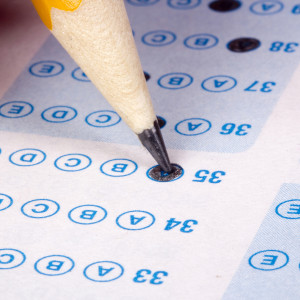The education policy world is buzzing. Universal pre-k for all 4 year olds. Free community college to anyone who wants to attend. Major changes to the No Child Left Behind Act. National School Choice Week.
Attention is warranted: education is a key to economic mobility in America. An additional year of schooling raises earnings by between 6 and 10 percent per year. According to Bureau of Labor Statistics data, the unemployment rate for those without a high school diploma is 8.6 percent. For college graduates? 2.9 percent.
Few things prevent poverty more effectively than does educational attainment. And there’s universal agreement that we should do better.
But what exactly is “better?” And how do we get there?
A series of four talks out this month featuring D.C. Public Schools chancellor Kaya Henderson, former Milwaukee Public Schools superintendent Howard Fuller, and AEI’s Frederick Hess and Arthur Brooks tackle these tough questions and should inform the debate.
All seem to agree on common themes: That our educational system should provide children with the opportunity to grow their unique gifts and talents—not just the ones that are easiest to measure; that no silver bullet policy has solved or will solve America’s education challenge; and that the process of reform—and the way it is communicated—must involve the communities, parents, and students affected by that change.
More specifically, each cautions against a key notion circulating in public debate.
First, we shouldn’t limit what education can or should do with the rhetoric we employ to spur change. Al Sharpton and Ted Cruz seem to agree on one thing (and possibly only one thing): That education is a civil right. But as Rick Hess argues, terming education a “civil right” implies that its primary goal is to boost the achievement of students who aren’t proficient and fix schools that are failing.
That’s a limiting notion, says Hess. Education’s goals should be expansive, fostering excellence for all students of all backgrounds and talent sets. Focusing on failures didn’t work well in No Child Left Behind. And such rhetoric ignores the reality that while attending school may be a right, educational advancement requires a handshake of commitment between teachers, students, and parents. Students who overcome problems associated with poverty and unstable families should be celebrated, but schools can’t be expected to solve those problems on a large scale—and policy that expects them to do so isn’t realistic.
Second, measure and focus on what parents and kids really desire—not just what policy wonks and bureaucrats think they should want. According to Henderson, “Parents like me want to know that their kids are going to go on to something amazing. Not that their kids have scored X on the CAS or Y on the NAEP. They don’t care about international competition. They don’t care about spending.” They care that when their kids are done with their education, they don’t come back to live in the basement.
While measures of math and reading proficiency are important, Henderson contends, the pursuit of scores shouldn’t drain every educational resource from other enriching activities—like music, social studies, and athletics—that serve as gateways to better life outcomes for many students.
And just as a narrow focus on a limited number of outcomes can be counterproductive, a limited focus on policy levers can be, too. When Henderson joined DCPS, she was convinced that if the system had the right teachers and administrators, its problems would be solved. Others argued that if 50 percent of DC’s students attended charters, outcomes would skyrocket. Neither proved to be a silver bullet. Success at scale requires sustained, dedicated leadership at the local level and a wide range of innovative policy efforts—not belief in a magic elixir.
Third, those effected by educational change must define and participate in that change. While Howard Fuller defends the value of school choice in empowering low-income families to attend better schools, he notes that the school choice movement is run by rich white people and primarily affects poor black and brown kids. If school choice is to succeed in the long term, he argues, those affected most by school choice must both buy in to its proposition and have agency in making it happen.
Finally, as Arthur Brooks argues, the debate should focus on the people policy aims to help rather than the things people oppose—not unions, as the right tends to do, or charters, as the left tends to do. That forces a connection between the aspirations of parents for their children and the leaders charged with creating an environment for them to realize those dreams. If arguments aren’t moral, aren’t people-focused, and aren’t succinct, they’re won’t be effective. Comparing Atlanta’s test scores to those of the Finns won’t do it.
In short, improving education isn’t simple. Having more of it doesn’t make it more effective. And making education “better” is misleading if advancement is limited to two metrics. It is vital to rethink the structures and practices that are no longer suited to today’s students or the futures they have ahead of them. But change also requires a holistic understanding of the goals and aspirations that parents have for their students, hard choices and sustained leadership, and an acknowledgment that silver bullets don’t work.

